 May
11
May
11
Tags
Quilty: Sit down bitch. Be humble.
Ben Quilty is a Top Bloke. On this matter we’re encouraged to agree. From Grandmas to Returned Soldiers and Aid workers, from Prison Wardens to Diplomats, from Refugees to Prime Ministers and Media Moguls, from ambitious artists seeking advice on how to ‘make it’ to Gallery Directors and Trustees, Quilty attracts followers like a God. We all confess to Quilty, and when he preaches, we must listen. He places himself on the front line of some of life’s more atrocious atrocities so we don’t have to. Quilty bears witness to a plethora of society’s ills, speaking for those who have no voice, translating others suffering through the lens of his unaddressed privilege for a committed audience in middle Australia. He’s like Mary MacKillop, but without the orphanages. Quilty’s brand has been promoted and perpetuated and exists to preserve dominant paternalism and white entitlement in a country not ready to let go of either. Yet.
Everyone has heartstrings and Quilty is living large pulling the fuck out of ours. He replaces tangible action with affective experience, where collectively doing good is replaced with our addiction to feeling good. Or at least feeling less bad. Quilty’s brand of activism is Activism-Lite. All that’s required from us to listen to and learn from his stories about the unique, selfless life he’s enduring for our benefit. The cruel world makes more sense when we listen to Quilty.
Quilty’s well-rehearsed and lauded Top Bloke routine, provides an interesting case study in the play of personality on event. His insidious charm offensive is used to disarm and conscript a growing fan base that affectively exists to sell paintings. If being an artist is a personality contest, Quilty is winning. Column inches aplenty are dedicated to recruiting new followers to Quilty’s nice-guy-solves-world’s-issues-brand and he has a disarming, self-serving habit of enlisting powerful best friends to help his career along. Friends like National Gallery of Australia Director Nick Mitzevich, media mogul art collector Kerry Stokes or the Australian Army.
TV executives love Quilty. He clogs the airways with ‘live’ feeds, on a range of topical issues, with the assured candour and impassioned sentiment of the seasoned media performer. Media performing is now central to the job description of the painter and Quilty is not one of those old-fashioned men who bottles up his emotions and only let’s them out Saturday nights when he’s munted with mates. Quilty’s not afraid to emote. He emotes all over us with frequency and enthusiasm:
‘My work is about working out how to live in this world. It’s about compassion and empathy but also anger and resistance. Through it I hope to push compassion to the front of the national debate,’ declares Quilty about his show Quilty. Quilty takes the paternalistic high road, his superior voice assuredly telling us what we need do. The exhibition is touring from the Art Gallery of South Australia onto Queensland, finishing up at the Art Gallery of New South Wales, where he has served as Trustee for an unprecedented record three terms. Quilty must be the best trustee in the business.
Committed punters and programmers love Quilty’s carefully crafted representations of white-man authority where, with paternalistic assuredness, Quilty solves all of life’s ills. Just like Daddy. Quilty as resistance fighter is an example of a member of the dominant group co-opting the language of activism, social conscience and advocacy for personal gain; of replacing agency with sound bites and screen-grabs and removing antagonism from the equation, because it’s antagonistic. People with power don’t like to hear anything except compliments. Quilty’s activism replaces group resistance with individual genius. ‘He has become a citizen artist, the witness to our times,’ says Curator Lisa Slade and we wince because Ben always does best out of Ben’s witnessing.
Quilty’s activist paintings are akin to Kendall Jenner’s tone-deaf ‘protest’ advertisement for Pepsi. ‘Protest’ is co-opted and used to shift product. Pepsi sells sugar water to the masses; Quilty sells ‘woke’ paintings to wealthy collectors and State funded collections. Within transactional economies there are increasing numbers of celebrity snake-oil-salespersons ready to rent their fame out to help the less fortunate. It’s good for their ‘brand’. Real activism is not about selling stuff; it’s about making change. Beware of Advertorial Machines: What the machine sells differs exponentially from what you think you’re buying. All over again.
https://www.youtube.com/watch?v=AfCiV6ysngU Pepsi Ad, Kendall Jenner 2.39mins
I am a keen and active long-time purveyor of a range of performances one might loosely refer to as: ‘Career Limiting Moves’. Quilty dressed as Jesus on the cover of ‘The Good Weekend’ is a top shelf fuck-up. There’s that saying that ‘no publicity is bad publicity’, but that’s bull-shite. Your publicist might work to reassure you that all press is good press but everyone knows you can’t believe your publicist. Ben Quilty on the burden of being Australia’s artist from central casting has entered the annals of ‘Misguided Media Mishaps’ in the Top Three. Another fun fact about famous white-man artists in Australia is their habit of falling into narcissism, megalomania, persecutory delusion and notions of the white savior. But I’ve skipped ahead of myself.
Eugene Yiu Nam Cheung with inspired critique of Quilty here: http://rundog.art/the-canonisation-of-quilty/
But for all his adventures and adulations, for all his Prize wins and market kindnesses, turns out Being Ben Quilty is not easy. We know this because, in column inches and interviews aplenty, Quilty paints the picture of how not easy it is to be a tall-able-bodied-successful-straight-middle-class-white-guy in Australia today. And it sounds terrible. ‘The complex burden borne by Australia’s crown prince of painting’ wades the Quilty ‘Golden Boy wunderkind’ narrative into the questionable emotional territory of ‘woe me’, of personal sacrifice and of martyrdom. ‘The White Man’s Burden’ Rudyard Kipling’s Imperialist poem of 1899, springs to mind:
Take up the White Man’s burden-
Ye dare not stoop to less-
Nor call too loud on Freedom
To cloak your weariness;
By all ye cry or whisper,
By all ye leave or do,
The silent, sullen peoples
Shall weigh your gods and you.
Take up the White Man’s burden-
Have done with childish days-
The lightly proffered laurel,
The easy, ungrudged praise.
Comes now, to search your manhood
Through all the thankless years
Cold, edged with dear-bought wisdom,
The judgment of your peers!
A messiah complex is when someone connects with God so hard they start believing they are God. Grandiose delusions and artists have always gotten along well historically speaking. Sure, artists have got to back themselves to be fucked to attempt making art but if you back yourself too hard and start believing your own hype, you doom your creative soul to hell. It’s a nuanced balancing act. Quilty is not an artist known for his self-deprecating humour. He wears his heart on his sleeve, metamorphising from ‘Maggot to Messiah’ like the leading man in a schmaltzy Hollywood blockbuster.
The White Saviour is a white person who acts to help non-white people solve problems caused by white people. The White Saviour has an entrenched history within colonial and imperialist histories where white people have pillaged for God and Country but reframed our settler theft as a great act of charity, modernity and civility.
In 2012 writer Teju Cole expanded on the ‘white saviour’ and coined the term “White Saviour Industrial Complex”. He published his seven-part list on Twitter and it instantly went viral because the words punch through illusion into fact:
- From Sachs to Kristof to Invisible Children to TED, the fastest growth industry in the US is the White Saviour Industrial Complex.
- The white savior supports brutal policies in the morning, founds charities in the afternoon, and receives awards in the evening.
- The banality of evil transmutes into the banality of sentimentality. The world is nothing but a problem to be solved by enthusiasm.
- This world exists simply to satisfy the needs- including importantly, the sentimental needs- of white people and Oprah.
- The White Savior Industrial Complex is not about justice. It is about having a big emotional experience that validates privilege.
- Feverish worry over that awful African warlord. But close to 1.5 million Iraqis died from an American war of choice. Worry about that.
- I deeply respect American sentimentality; the way one respects a wounded hippo. You must keep an eye on it, for you know it is deadly.
Manufacture. Sell. Deploy. Commemorate:
Quilty is a well-paid employee of the White Saviour Industrial Complex. Quilty gained much attention in 2011 when he travelled to Afghanistan. Attached to the Australian Defence Force (as part of the Australian War Memorial’s antiquated, but still distinguished, program of commissioning war artists) to tell us about the heroic suffering of our troops, even when these troops are being used as the geo-political puppets of the US interventionist policies. Australian troops had been deployed on ‘peacekeeping missions’ with guns. Initiated during the First World War, the War Artist programs relevance to contemporary thinking has expired, but still it continues. An irrational stigma of prestige lingers round the program. And the selected artist gets paid a fuck-tonne. Cash for cachet.
The thing about art about war, art that might purport to be ‘anti-war’, is how easily it can slip into propaganda that perpetuates war. War is Big business. Quilty’s ‘After Afghanistan’ exhibition at the Australian War Memorial was sponsored by Thales arms manufacturers. A company whose business is war, put their hands in their pockets to sponsor an art show because they identified the work as propaganda that will help them out into the future. Sponsorship is a co-branding exercise. Thales backed Quilty’s ‘After Afghanistan’ exhibition because they liked what they saw. The work perpetuates long established war narratives: of our heroic young soldiers doing extraordinary service in distant, far off lands, for their country. Thales wouldn’t have invested in Quilty’s show otherwise. A conflict of interest exists in arms manufacturers sponsorship deals with exhibitions within the Australian War memorial. Thales also partnered with the AWM on the Napier Waller art prize for art produced by returned soldiers.
Arms manufacturers haven’t just marched in to the War Memorial, they’ve marched in to our Universities to help them out too. When education morphs from an investment a civilized society makes in it’s future, into a business, the doors swing open to any number of weird assed ventures. In 2017 the University of Melbourne announced a research partnership with Lockheed Martin – the world’s largest weapons manufacturer – through the Defence Science Institute. Lockheed Martin (share price up 330% since September 11) established a co-joint research centre adjacent to the University of Melbourne campus and Melbourne University are excited about the potential of this exciting new partnership. This is Lockheed Martin’s first research centre outside of the US. Australia has a long, illustrious history mimicking the very worst ideas generated in the US of A. The centre will: “provide PhD scholarships and internships, while directly funding research projects and co-authoring applications in the future”.
Can We Put the Guns Down Now? Is not a question you’ll hear Quilty ask. Quilty perpetuates established Western war narratives, where the heroic suffering of our own invader troops foreshadows all else. The mateship and camaraderie of our soldiers lasts a lifetime. ‘Lest we forget the young men who were killed in Afghanistan, their Mums and Dads, brothers and sisters and most of all their children’ posts Quilty to his Insta feed on Anzac day, accompanying his portrait of an Australian returned solider, smears of paint bleeding out from forehead symbolizing our soldier’s anguish after battle. You can buy this Quilty painting and buy it they did. The well funded and ever expanding War Memorial Museum recognized an affective piece of propaganda and snapped it up for their vast collection.
For World Vision, Quilty ‘worked’ to raise awareness of the suffering of refugee victims of war from the same interventionist policies he’d delved into as war artist. Never are ‘A’ and ‘B’ put together because propaganda isn’t big on joining dots. World Vision is an evangelist religious organisation that supported Gay marriage for 2 days before changing their minds due to the popular demands of its supporters. World Vision is a huge multi-national aid organisation doing a roaring trade ‘helping out’ people who need help.
On the ABC we read: “Confronting Mortality- Artist Ben Quilty and author Richard Flanagan make a harrowing trip to Europe and the Middle East to witness first-hand the refugee crisis’. ‘Yet, the grieving parents welcomed the visitors’ presence. “They wanted their story told”, Quilty said. “They all want their story told. They feel like no-one’s listening and no-one cares.” Telling these stories has become Quilty’s latest cause.” After the ‘harrowing trip’ Quilty produces a series of paintings of refugees represented as life jackets went on sale at Art Basel Hong Kong. War induced suffering and trauma as high-end art commodity, proudly exhibited at market. The work was sold to a wealthy Australian collector and donated to the art gallery of South Australia. Quilty gets paid. Australia addresses the refugee crisis superficially. Problem solved.
Kerry Stokes collects Quilty’s art, speaks to his artistic genius and Stokes is Chairman of the Australian War Memorial. Stokes is as enamoured with war narratives as Quilty is. Stokes employs Australia’s most decorated former soldier, Ben Roberts-Smith at Channel 7. For professional soldiers like Roberts-Smith, war zones are an opportunity to establish career trajectories and no war accolade is higher than a Victoria Cross, which Roberts-Smith received following tours in Afghanistan. Roberts-Smith is an Australian war hero, but according to SAS whistle-blowers he is a war criminal.
http://www.marquelawyers.com.au/assets/crikey-article-290818.pdf
The SAS is not renowned for their clear and transparent dealings with each other or anyone else, but everything is usually shrouded in comradely silence so the ‘leaking’ of info about Australia’s most decorated former solider is of note. But Kerry Stokes is standing by Roberts-Smith, who has employed Sue Cato’s public relations firm to clean up his public relations nightmare and thus secure his future career prospects. An Age front-page report questioned Roberts-Smith’s good-solider reputation. In 2013, Roberts-Smith was named Australian Father of the Year, but in 2017 he took his mistress to a high-faluting dinner in Canberra. When she got drunk, he got angry and allegedly a domestic violence incident occurred back at the Hotel.
If Ben Quilty hadn’t existed, Australia may well have had to invent him. Six foot two, built like the builder’s labourer he once was, he is the artist from central casting perfect for Home and Away. “It’s why everyone relates to him,” says Kerry Stokes. “And it’s why he can capture the emotional feel of people. They actually open up to Ben. They feel safe with him.”
If you’re calling Kerry Stokes to vouch for your good character and artistic prowess it’s time to pack up your paint trowel. Stokes is the owner-occupier of Channel 7. His network broadcasts racist, sexist, divisive opinion into Australian living rooms daily. Pauline Hansen is a regular guest. Quilty’s mate Kerry Stokes bought a couple of Quiltys for his art collection too and Sue Cato, she bought one. According to Cato in the Good Weekend article she bought the best of them.
‘ASIO Begins Special Crackdown On Identifying Right Wing Extremists By Turning on Channel 7’ sums up Stokes’ broadcasts. Has Quilty challenged his good mate Kerry Stokes’ philosophy of division? Quilty purports to speak truth to power and challenge authority but he panders to both. Power and authority are his bread and butter. Cashed-up interests speak loudest in conversations about everything. Quilty has more dangerous contacts on speed dial than most multi-national CEOs.
https://www.youtube.com/watch?v=Zg3Dc8jygxI);
Is it just me or is their a nagging feeling that we’ve met Ben Quilty before? Ben Quilty is to activism what Paleo Pete (Evans) is to healthy eating on TV, but their ‘work’ cannot be scientifically proven. Each man is more comfortable telling other people what to do than they should be and each offers quick fixes to complex problems. But Quilty and Paleo Pete are so well intentioned and enthusiastic that we’re encouraged to forgive them when their ideas turn out to be shite. If we don’t forgive them their paternalism, we’re jealous and envious of their success and negative and ‘can you stop trolling my site now. I don’t care what you think’. Generically attractive ‘Ken doll’ style white men of this ilk always get a ‘right-of-reply’ to critics of their ‘brand’:
‘I’m no baby killer’ declares anti-vaxxer Paleo Pete, defending his book which spruiks a diet for babies that medical experts assure parents could result in their death. But Paleo Pete is still on My Kitchen Rules. Quilty and Paleo Pete and Tim ‘Whoopsie’ Worner and Ben Roberts-Smith have all had their careers protected and nurtured and cajoled by Kerry Stokes. Kerry Stokes ‘stands by’ so many deeply flawed, high profile white men whose careers have fallen into disrepute, you could argue his bromances and ‘Captain’s Picks’ represent much of what’s wrong in Australia today.
Middle-aged white men are 10% of the Australian population. They are also 70% of the Federal Parliament; more than 60% of most state parliaments; 75% of corporate leadership; 80% of film directors and writers; 70% of named producers of media content; 77% of quoted sources in the news; 63% of the judiciary; 80% of recipients of grants for scientific research; 85% of University Vice Chancellors; 80% of the top wage earners and 3% of stay at home parents. I sited these inequities to a friend recently and he shut me down with a frustrated gasp of: ‘Yes Nat, we all know the stats’. Problem is, the stats aren’t shifting. The dudes, exhibiting a petulant defiance, have dug themselves into the trenches. (SMH: ‘Are middle-aged white men losing their grip on power?’)
We’re looking at art made by Ben Quilty and listening to his ruminations about how the world can be a better place because the rich and powerful like looking in the mirror and listening to themselves. Of course he’s doing well. Mainstream Australian culture is working hard to perpetuate its tired, old, outdated narratives. But there’s real change in the air now. And the only role Ben Quilty plays within this changing landscape is as a stark example of what not to do. Don’t dress up and preach and play god’s son because you are the problem. Or, in the wise words of Kendrick Lamar: ‘Sit down bitch. Be humble’.

Self Portrait after Rattle’s Bucks, 2012
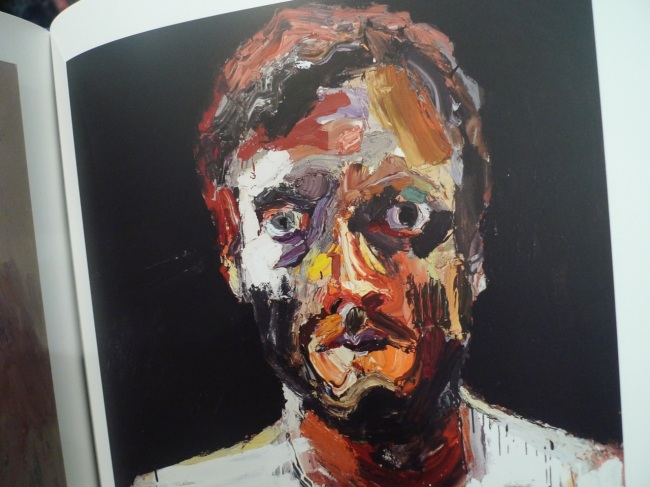
Self Portrait after Afghanistan, 2012

Self Portrait after Afghanistan, with Beard and a Red Cap, 2012
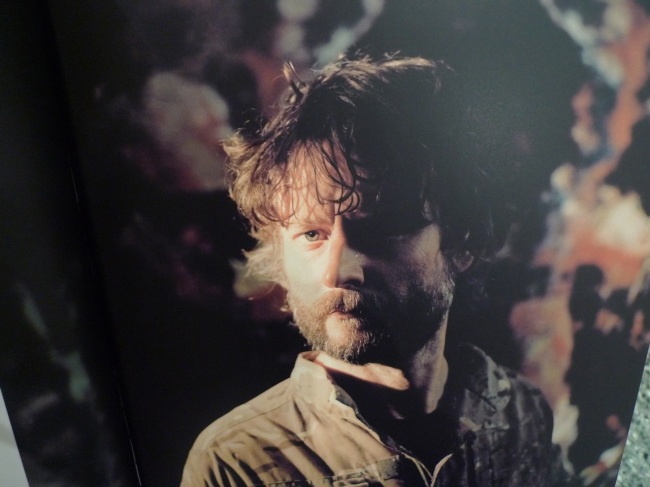
Artist in Studio

Self Portrait at 42, 2015

Self Portrait (Monster), 2013; Self Portrait (Big Mouth), 2013

Self Portrait on Cold and Flu Tablets, 2013

Celebrity Artist
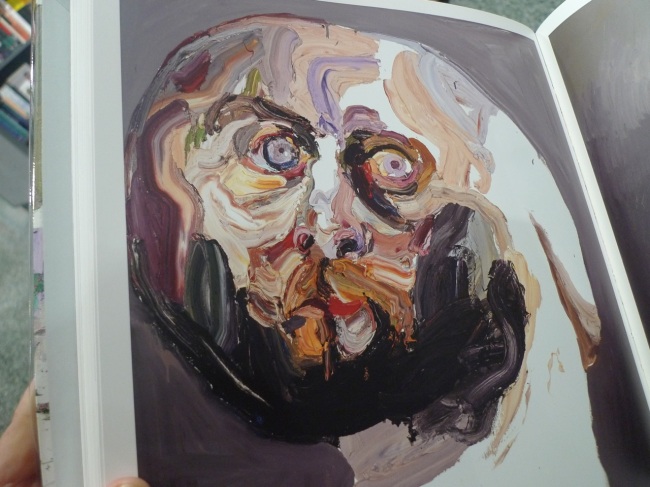
Self Portrait with… ,2014

Self Portrait after 2015-2016
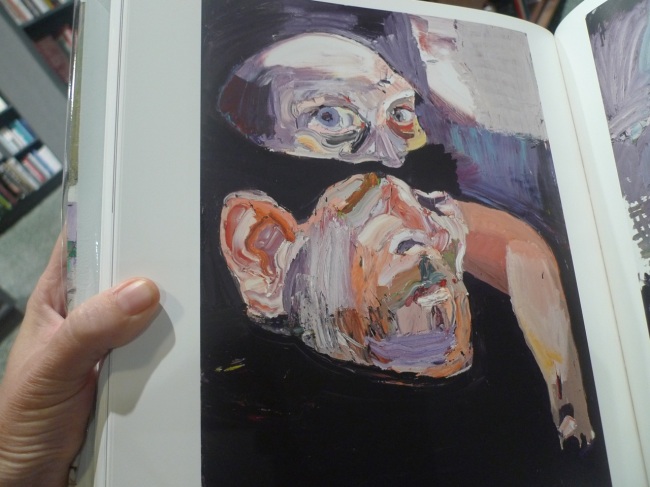
Self Portrait, May 2015
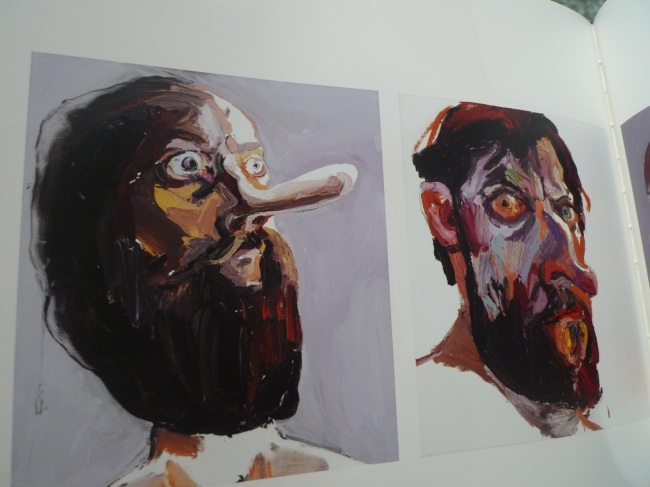
Self Portrait (Windy Day), 2013; Self Portrait (Serious), 2013

Cap Self Portrait, 2013

Santa’s Little Helper no. 2 (Pat), 2018

The Biggest Bottom Feeder, 2018

The Bottom Feeder A Conundrum, 2018

Self Portrait after Denpasar, 2015

Self Portrait Straight White Male, 2014

Another Self Portrait

Self Portrait, The Executioner, 2015

Hard Yakka

The Evo Project no.15 (Luke), 2011
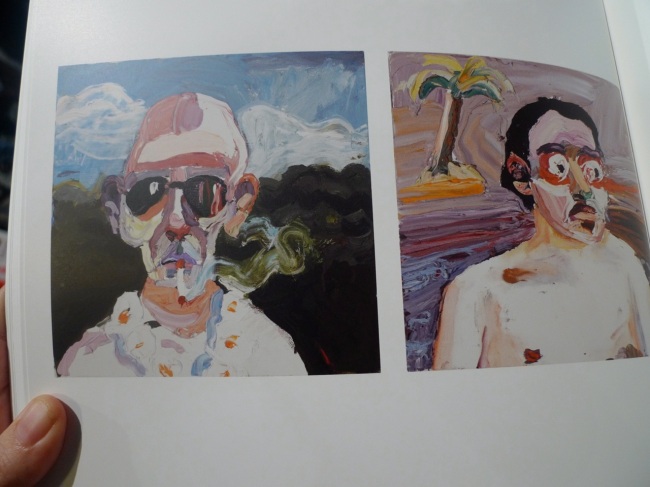
The Groom, 2012/ The Guest, 2012

Straight White Male, Self Portrait (Tongue), 2014

Straight White Male, Self Portrait, 2014

The Groom, 2012/ Self Portrait after Fiji No. 2, 2012

Rob Rosenberg jumped off a Cliff, 2017/ Whytie used a Machete, 2017
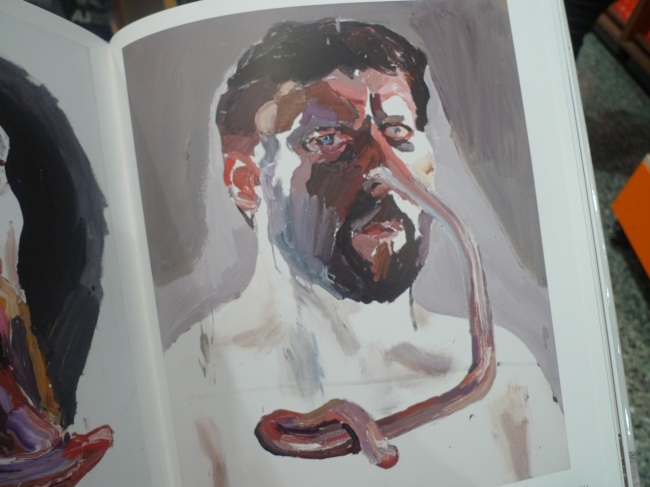
Straight White Male, Nose Self Portrait, 2014

Kandahar, 2011/ Troy Park after Afghanistan, 2012

More Portraits

Assorted Portraits

Straight White Male (Round Head), 2014

Self Portrait on the Day of the Review, 2013
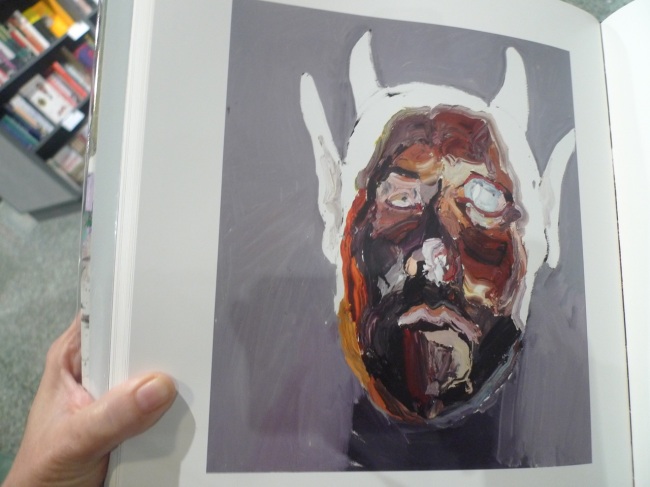
Self Portrait Straight White Male (Devil), 2014

Self Portrait Moustache, 2014
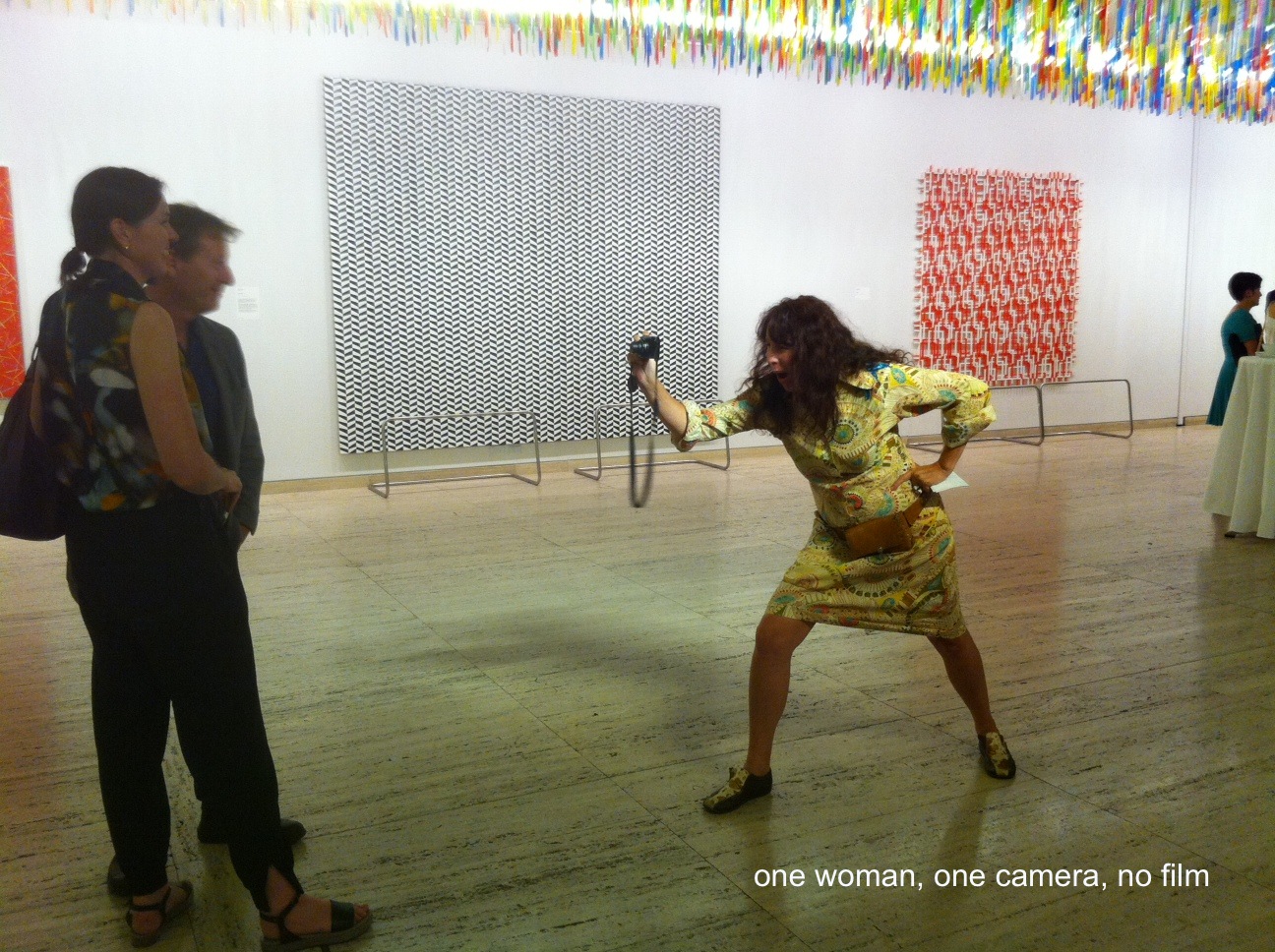
Oh thank you! I’ve had similar thoughts but dared not speak them.
LikeLike
Pingback: NATALIE THOMAS on Ben Quilty – Ones Own and Others Otherness
Hi Nat Great article! Very good indeed. I think there might be a word missing in the second last sentence. Donât want your article to lose its punch at the end:
Donât dress up and preach and play godâs son because are the problem. Or, in the wise words of Kendrick Lamar: âSit down bitch. Be humbleâ.
Between âbecauseâ and âareâ? Best wishes Rebecca
Sent from my iPhone
>
LikeLike
Wow, hateful stuff. Signing off forever, I hope the anger that clearly drives you finds avenues of release into this universe that don’t make it a sadder place to live, a world to be inherited by my children.
LikeLike
Oh shut it will you
LikeLike
Absolutely brilliant. Thank you.
LikeLike
When Nietzsche’s last men are hailing you as a hero and a saint… you know your one of them.
Bravo i say….. bravvo
Rene sinkjaer
LikeLike